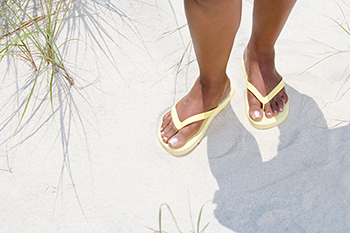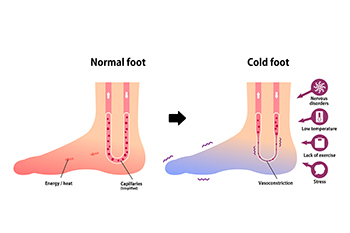
Summertime calls for laid-back footwear, and flip-flops have long been a popular choice for their simple and stylish appeal. However, beneath the relaxed vibes, frequently wearing flip-flops can take a toll on our feet. Wearing these types of shoes may lead to a range of foot problems. These flat, open-toed sandals offer minimal arch support and cushioning, leading to issues like arch pain, plantar fasciitis, and possibly stress fractures. The lack of straps can cause the toes to grip the sole tightly, potentially leading to conditions such as hammertoes and calluses. While flip-flops are convenient and attractive, it is vital to acknowledge the potential harm they may pose to our foot health. If you choose to wear flip flops during the majority of the summer months, it is suggested that you consult a chiropodist who can guide you toward additional stylish shoes to wear which can help to protect your foot health.
Flip-flops, though they may seem harmless, are bad for your foot health. If you would like to learn more about the many problems that can be caused by frequent flip-flop wear, please consult with one of the specialists from Thornhill Foot Clinic. Our chiropodists can help you maintain the health of your lower limbs and your mobility.
Flip-flops are the quintessential summer shoe, seemingly perfect for the beach or pool. Unfortunately, these flimsy shoes are not a good choice when it comes to keeping your feet healthy.
Frequently wearing flip-flops is associated with:
Hammertoes
Bunions
Plantar fasciitis
Heel spurs
Cracked heels
Plantar warts
Athlete’s foot
Foot pain
Foot and ankle injuries
Gait changes
Leg, hip, and back pain
The best way to avoid these issues is to swap your flip-flops for more protective and supportive shoes. If you must wear flip-flops, wear them only for short periods of time.
If you have any questions, please feel free to contact our office located in . We offer the newest diagnostic and treatment technologies for all your foot care needs.





